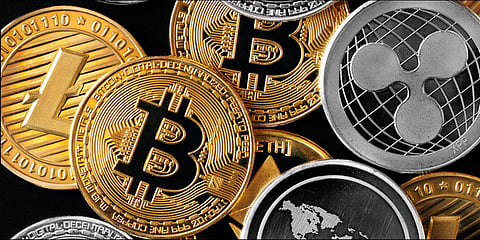Tokenization of Real-World Assets: A Revolutionary Shift in Crypto
The tokenization of real-world assets (RWAs) has emerged as a significant development in the crypto and financial worlds of 2025. Tokenization refers to the process of converting physical or traditional financial assets—such as real estate, gold, stocks, or artwork—into digital tokens on a blockchain. These tokens can then be traded, sold, or held on digital platforms, enabling faster transactions, more secure records, and access to previously illiquid markets.
The Growing Market for Tokenized Assets
Over the past year, tokenized assets have seen explosive growth. In early 2025, the total value of tokenized real-world assets on public blockchains rose to nearly $18 billion, a sharp increase from about $10 billion in 2024. This nearly 80% surge highlights the rising trust and adoption of tokenized assets across industries. Market forecasts predict that the tokenized assets market could reach as much as $18.9 trillion by 2033.

Several key trends are fueling this expected growth:
- Greater participation from banks, asset managers, and governments
- Increasing clarity in regulations related to digital assets
- Advancements in blockchain technology that make tokenization more secure and efficient
Institutional Adoption Gathers Pace
Financial institutions and technology companies are embracing tokenization at a rapid pace. Several new platforms have been developed that allow users to trade tokenized versions of traditional assets. For instance, companies are now offering fractional ownership of real estate through digital tokens. This innovation makes investment opportunities more accessible to a broader range of investors.
Tokenization is being applied to various assets, including:
- Treasury bonds
- Fine art
- Commodities like gold and oil
- Private equity shares
Large blockchain foundations are working to bring billions of dollars’ worth of real-world value on-chain. Some aim to handle over $100 billion in tokenized volume by the end of 2025. Private blockchain networks supported by global financial firms and tech giants are also being developed to facilitate secure, private, and efficient asset transfers.
Evolving Regulatory Environment
Regulatory clarity has been a significant hurdle for the growth of tokenized assets. However, in 2025, several countries and financial authorities have started creating clearer rules for digital assets. In the United States, regulatory bodies are working on formal guidelines for tokenized assets considered financial securities. The United Kingdom’s financial regulator is introducing a long-term strategy to promote tokenization in the fund management sector.
Key Benefits of Tokenizing Real-World Assets
Tokenization offers several advantages:
- Improved Liquidity: Tokenization makes previously illiquid assets easier to trade. For example, real estate or fine art can be sold in smaller fractions quickly and with lower fees.
- Greater Accessibility: Tokenized assets allow more people to invest in markets that were once limited to wealthy or institutional investors.
- Operational Efficiency: Blockchain technology reduces the need for intermediaries, automating settlements and reducing human error.
- Enhanced Transparency and Security: Each tokenized asset is recorded on a blockchain, providing a secure and unchangeable ledger.
Challenges Ahead
Despite the promising future of tokenized assets, several challenges need to be addressed:
- Unclear regulations across different countries
- Technological integration with existing financial systems
- Education and awareness among potential users
- Cybersecurity risks associated with digital platforms
Future Outlook
Tokenization is poised to become a crucial advancement in both crypto and traditional finance. Future developments may include government bonds issued as tokens on public blockchains, real estate platforms offering live token trading, and global stock exchanges experimenting with blockchain-based settlement systems. The continued partnership between traditional financial institutions and blockchain innovators will be critical in shaping a more open, efficient, and inclusive financial system.
The tokenization of real-world assets marks a significant turning point in the evolution of finance. By converting physical assets into digital tokens on blockchain networks, the financial world is moving toward a future that is more liquid, accessible, and efficient. Despite challenges related to regulation, technology, and education, the progress seen in 2025 points to a bright future for tokenized assets.


